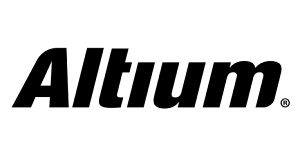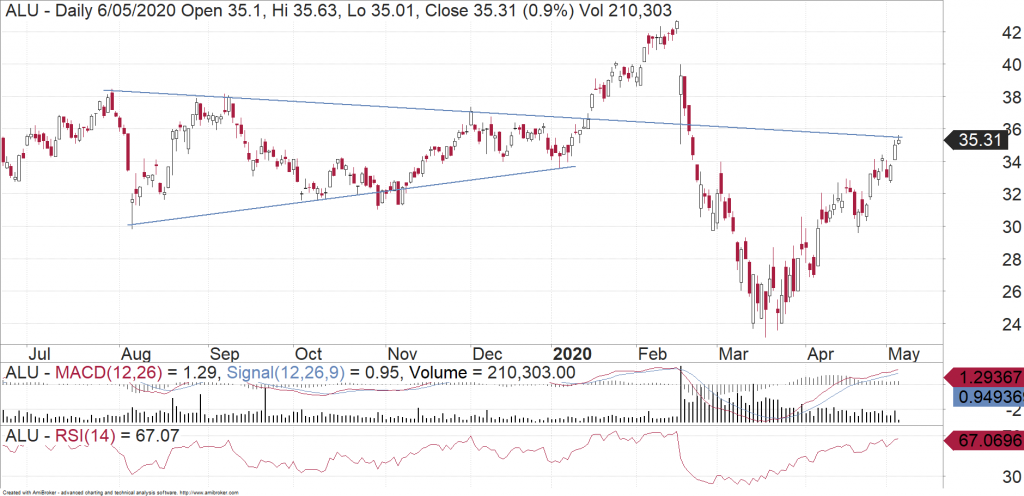Shares in Altium (ASX:ALU) were hit hard during the onset of COVID-19. However, they have recovered extremely well, with no signs yet of slowing down. How much more upside can we expect from the share price?
We revisited Altium on 14 April after the Company withdrew its previous guidance for the 12 months to 30 June 2020 (FY20). The stated guidance for FY20 (as at February 2020) was for revenue to be at the lower end of the US$205-215m range and for EBITDA margin to be in the range of 37-38%. Since our report 3 weeks ago, ALU shares are trading nearly 15% higher (go here to sign up to a free trial of our client research).
The withdrawal of guidance in the latest trading update was related more to the uncertainty on the impact of COVID-19, rather than any tangible evidence of COVID-19 having an impact on the business. Notwithstanding this, we identified in our recent report a number of factors that may have negative implications for group revenue over the short term in light of the ongoing COVID-19 crisis. But the broader questions for investors are: Do these alter the fundamentals and ALU’s premium market rating; and how effective are the Company’s mitigating strategies likely to be?
About Altium
Altium develops and sells software and hardware for the design and development of electronic products. The Company is one of the largest providers globally of printed circuit boards (PCB) design software and has an estimated market share of ~26%. ALU has four key products:
i. Altium Designer: Software for the design of PCBs;
ii. Nexus: A collaborative, cloud enabled PCB design solution;
iii. TASKING: Software for the design of embedded systems development; and
iv. Octopart: An electronic parts search and discovery engine.
Key Fundamental Drivers
1. Strong Product Offering
The Company released its latest version of Altium Designer (Altium Designer 20) in late 1H20. In addition, ALU further committed to Altium Nexus development. These two products represent the core Altium technologies that the Company intends to use in order to achieve market leadership.
The increase in new Altium Designer seats of 19% and record growth of 16% in the subscription base to 46,693 subscribers in 1H20 places the Company on track to reach the target of 100,000 subscribers by 2025.
In addition, the Company has started the process of rolling out its new cloud platform, Altium 365. This is the first step to connect the design space to the supply chain and manufacturing floor. In less than three months since launch, over 90 companies are using Altium 365 and have hosted their component libraries on this platform.
2. Highly Adaptable Business Model
On face value, the Company’s dependence on perpetual licence sales means that any revenue impact from COVID-19 will be high margin. Over the short term, there is expected to be a margin impact on the basis that the Company will need to invest more heavily in sales and marketing to offset COVID-19 pressures.
Balanced against this cost pressure, underlying demand for ALU’s product remains unchanged. Accordingly, sales momentum is to be maintained into FY21, albeit with a material step-up in sales and marketing required. While this implies that margin pressure is likely to continue into FY21, it is worth noting that the Company has a strong history of generating operating leverage. Since 2H16, revenue growth has consistently outpaced operating expenses growth.
Further, the business model is highly adaptable to be able to work digitally/remotely, with marketing and direct selling currently conducted through the internet and via telephone.
3. Strong Balance Sheet
ALU is in a net cash position (US$80.7m as at 31 December 2019) and the Company is strongly cash generative. These factors have allowed the Company to internally fund acquisitions as well as pay steadily-increasing dividends. In the recent trading update, the Company commented that cash reserves have continued to grow.
Fundamental View of Altium
ALU is well placed to navigate the difficult operating environment over the short term arising out of COVID-19. Despite the revenue impact short term, we contend that the fundamentals have not changed from a longer-term view. Taking a lesson from history, it is believed that GFC impacts were relatively minimal on the PCB design software markets; noting a larger focus on Research & Development (design and prototyping) to capture the next wave of demand as economic conditions improved. Accordingly, it is likely that COVID-19 economic impacts will not affect ALU’s ability to achieve its FY25 revenue and margin targets.
Other catalysts for the shares include:
i) Commercialisation of the relationship with Dassault Systemes, and
ii) Potential for ALU to be a takeover target.
Following the recent re-rating in the shares, ALU is trading on a 1-year forward P/E multiple of ~46x. While this multiple appears pricey, it is worth noting that the multiple is still at the lower end of the ~40-60x range that the shares have traded on over the past few years.
Charting View of Altium
ALU has been trading well since the March lows, forming higher highs and lows and steadily rising higher. We believe that the share price should continue to head higher from here. There will be some short term resistance at current levels, however if we don’t see a major rejection in price, then it should be able to push through. That would then lead to a retest of the $40 level.

Michael Gable is managing director of Fairmont Equities.
Current share prices available here.
You can learn more about technical analysis in this article.
An 8-week FREE TRIAL to The Dynamic Investor can be found HERE.
Would you like us to call you when we have a great idea? Check out our services.
Disclaimer: The information in this article is general advice only. Read our full disclaimer HERE.
Like this article? Share it now on Facebook and Twitter!

